EDC, GPP, Marie Kondo, and being prepared for anything
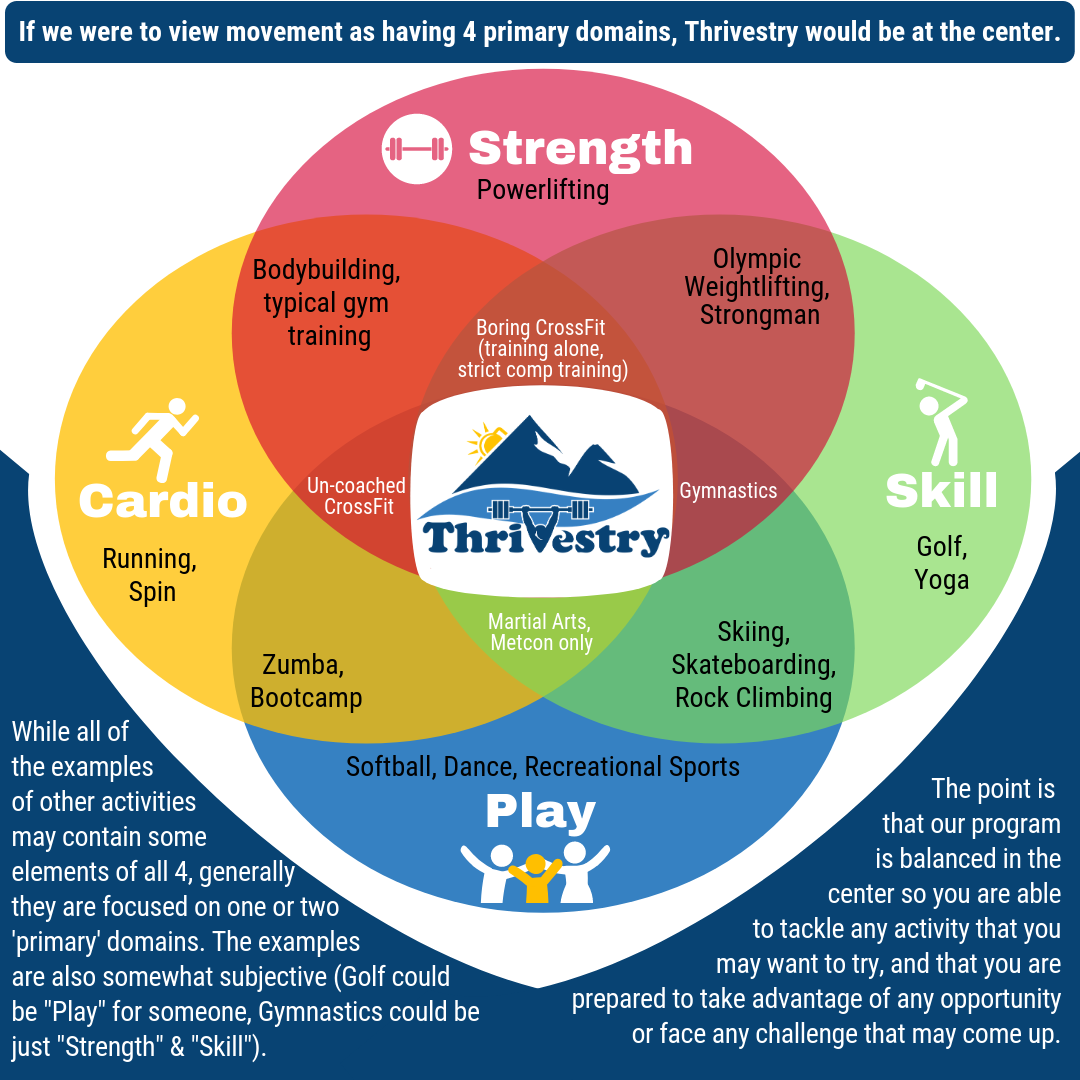
EDC stands for “Every Day Carry”. It is a term generally used for what items a person tries to bring with them every day so they can be prepared for life’s unknown and unknowable.
For some, it means carrying their phone, charging cables, a backup battery, headphones, maybe some notebook/journal. For others, it means having a multitool, a flashlight, maybe some paracord, nearby.
Another version of EDC might be the outfit that you can wear in just about any situation. That little black dress may not work if you are going climbing or canoeing, but the right one can look good at a fancy dinner, at the club, and while adventuring around the city on a lazy Sunday morning (while still being comfortable).
Now imagine you are going on an extended trip and you are very limited on what you can pack. You can only bring one backpack or large handbag.
You must be selective on what you are going to bring. The things you will want to have with you should be multi-purpose, lightweight, and durable/multi-use (you use it more than a few times).
Bringing a hair dryer, fancy dress shoes, or a large sleeping bag, probably aren’t the best options. Carrying 5 outfits, a kettlebell, or a week’s worth of snacks, isn’t even possible.
It helps if you know a little about where you are going and where you’ll be spending most of your time, but the goal is to be prepared for just about anything.
Will these multi-purpose/lightweight/multi-use items be ‘perfect’ for some scenarios? No.
Will they allow you to get through the unexpected and to take advantage of opportunities when they come up? Absolutely!
The point is to have the ‘good’ tool on you right now rather than the ‘perfect’ tool somewhere else.
To have the ‘right now’ tool that works, rather than the ‘right’ tool that you’d have to lug around with all of the other ‘right’ tools that only work for specific tasks.
Ideally, we’d be able to have a fleet of trucks following us around so we have everything at our disposal whenever we needed it. Not only is this ridiculous, it would also be exhausting. We’d still have to decide exactly which thing to use… and find it in the piles of stuff we were lugging around.
Another option would be to have loads of cash. We could buy everything we need in the moment or pay someone else to handle it. This would be terribly expensive, not to mention wasteful.
Having a few good tools with us all of the time is better than lugging around too many tools, always having to buy one, or missing opportunities because the special ones we brought won’t work.
This is how we should think about fitness… This is how we should think about life.
Marie Kondo is all about only keeping the things that “spark joy”. The things that you use regularly. The things that you love. Get rid of all the extra ‘baggage’ that is just weighing you down or taking up space.
GPP (General Physical Preparedness) should be similar.
You should stick to the things that make you better at the stuff that you do all the time, or better prepared to do the stuff you want to do when the opportunity/challenge arises. You should forget about all the extra crap that is wasting your time and money or that is highly specific to a task you aren’t looking to be world class at.
For example, spending hours training with an advanced powerlifting program (when you never plan to compete) is a waste of time. Jogging for hours per week to look good and ‘be fit’ (when you don’t even like running) is a terrible idea. You are ‘off center’ (see diagram above).
Side Note: There is nothing wrong with specializing. Challenging yourself or spending extra time doing something you love is one of the ways we can keep our training interesting! But long-term specialization comes at a cost. You may have to sacrifice some of your adaptability and miss some opportunities that come your way. The important thing to realize is that this trade off is going on, and understand how to get back to center when you are ready.
A good GPP program is like that black dress or the ultimate multitool.
It isn’t going to be the ‘perfect’ choice if you had every option available, but it is going to be available when you need it and it is going to get the job done.
- Sprinting to catch that connecting flight.
- Having a fast-enough metabolism to enjoy the yummy foods on occasion without guilt.
- Skiing down that black diamond you weren’t expecting.
- Snorkeling the once-in-a-lifetime reef when the surf is high.
- Learning to wakeboard on a whim.
- Recovering from a tough pregnancy.
- Winning the final point on the company softball team.
- Wearing the swimsuit in front of strangers you want to impress.
- Helping a friend move (or moving yourself).
- Finishing the 5k or Spartan race with your friends (that you just signed up for last week).
Life isn’t going to allow you to specialize in everything that might come up, just like you can never have a house large enough to keep everything you have ever owned or will need for the future.
Good programming for General Physical Preparedness has distilled the movements and training protocols to the essentials for the widest impact. It uses the important movements in the right ratios, in combinations that are effective and safe, while creating a chain of linked stimuli that doesn’t require excessive time to complete each day and can be sustained for decades.
Let me repeat:
- Important movements/domains that have a wide impact
- Combinations that are effective and safe, and movements/domains mixed in the right ratios
- Planned to work together, and take as little time as possible (while providing significant results)
- Can be sustained for decades
In other words:
- Multi-purpose – prepares you for as many scenarios as possible
- Lightweight – doesn’t create too much of a burden time/energy/money-wise
- Durable/Multi-use – gets used over and over, frequently, for a long period of time
This is what training with us does. It turns your body into the ultimate multitool, the ultimate outfit… your ‘secret weapon’ for any occasion.
It allows you to be ready for just about any challenge. It allows you to take advantage of every opportunity.
It doesn’t require you to invest hours a day or specialize in things that aren’t likely to come up.
It gets you ready quickly, while minimizing the possibility of getting broken.
It is something that you’ll use every day, and it is something that you’ll be able to use the rest of your life.
So the next time you are wondering why you keep investing in working out, remember the times in the past you were ‘ready’ because of your fitness (or times you missed an opportunity because you weren’t “fit” enough).
And imagine all of possibilities you’ll be able to overcome or take advantage of in the future because of your training.
We workout not to be better in the gym… We workout to be better at life.
Thrive on.
-jj
Please share this if you found it useful or if you think it might help someone else.
Here are a few other things you may find interesting:
I did CrossFit for 15 Years and This is What it Did to My Body
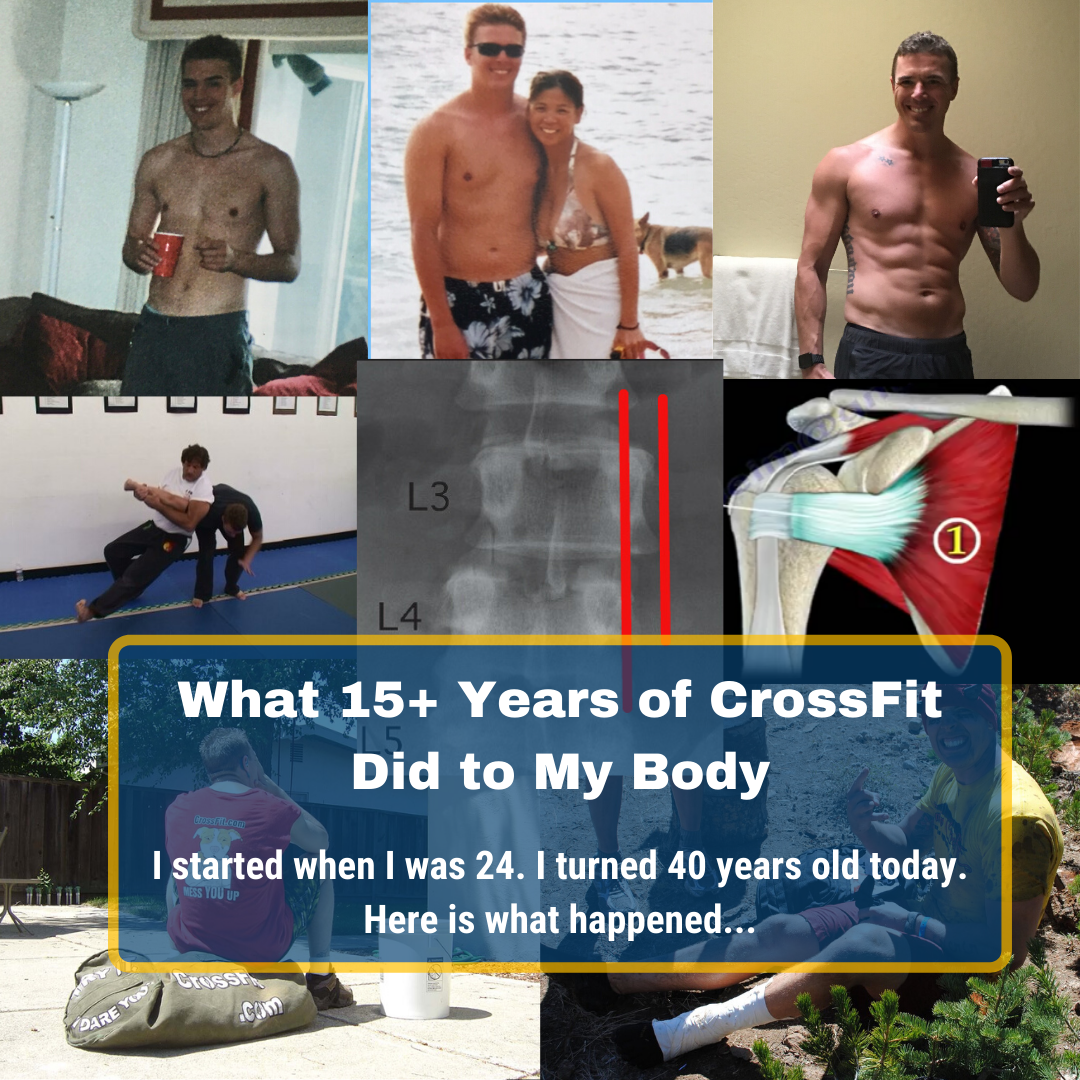
I started CrossFit when I was 24. I am writing this on my 40th birthday. I hate working out, and I have never had a membership to a gym (even though I have owned a more than a few).
It has been a crazy journey and I’d like to share some of my history, my mistakes, and what I have learned along the way. This is a ‘long one’ so make sure your coffee is topped off and/or you have your reading glasses handy.
Using the Context of the Programming for Longevity and Getting out of Ruts
The context is the recommended overall approach to the class that day. Without a planned approach you will likely stick with the same default approach you are comfortable with and you will not get the most out of your training.
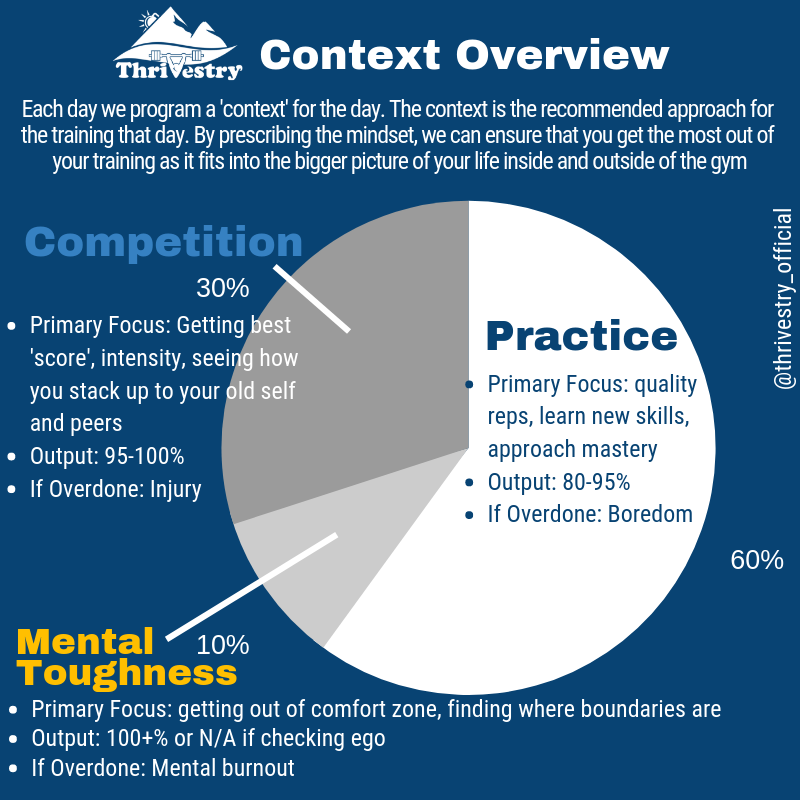
One of Thrivestry's Secret Ingredients That Makes People More Awesome, the "Strength Focus"
CrossFit is known for being "constantly varied", but that doesn't mean random. Can we improve results, make the classes easier (to learn movements and to coach), while improving safety and ensuring that people make gains for more than 10 years?
Yes.
And we can do that by using what we call the "Strength Focus".
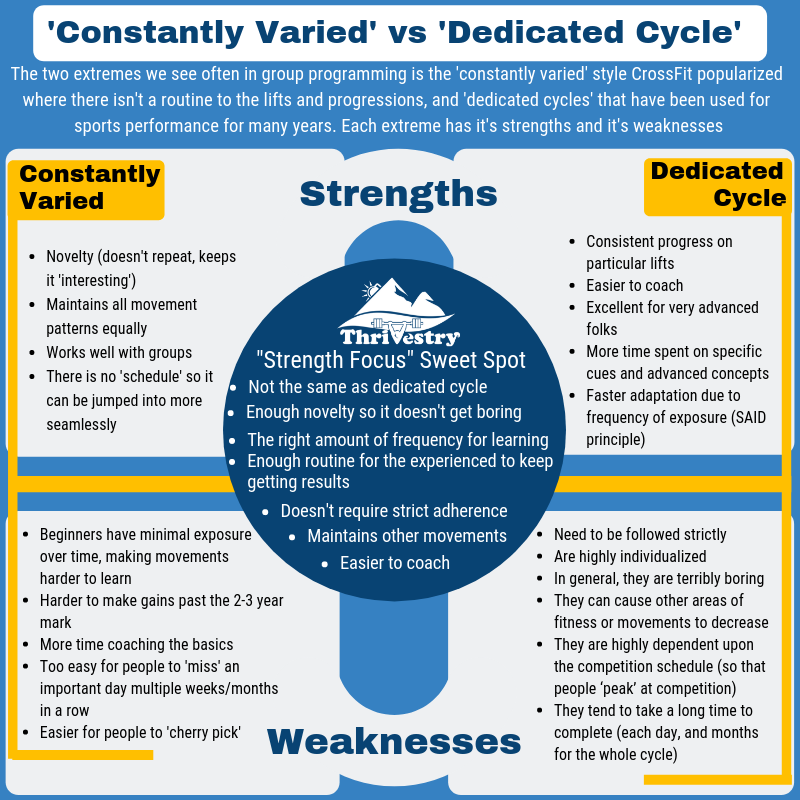
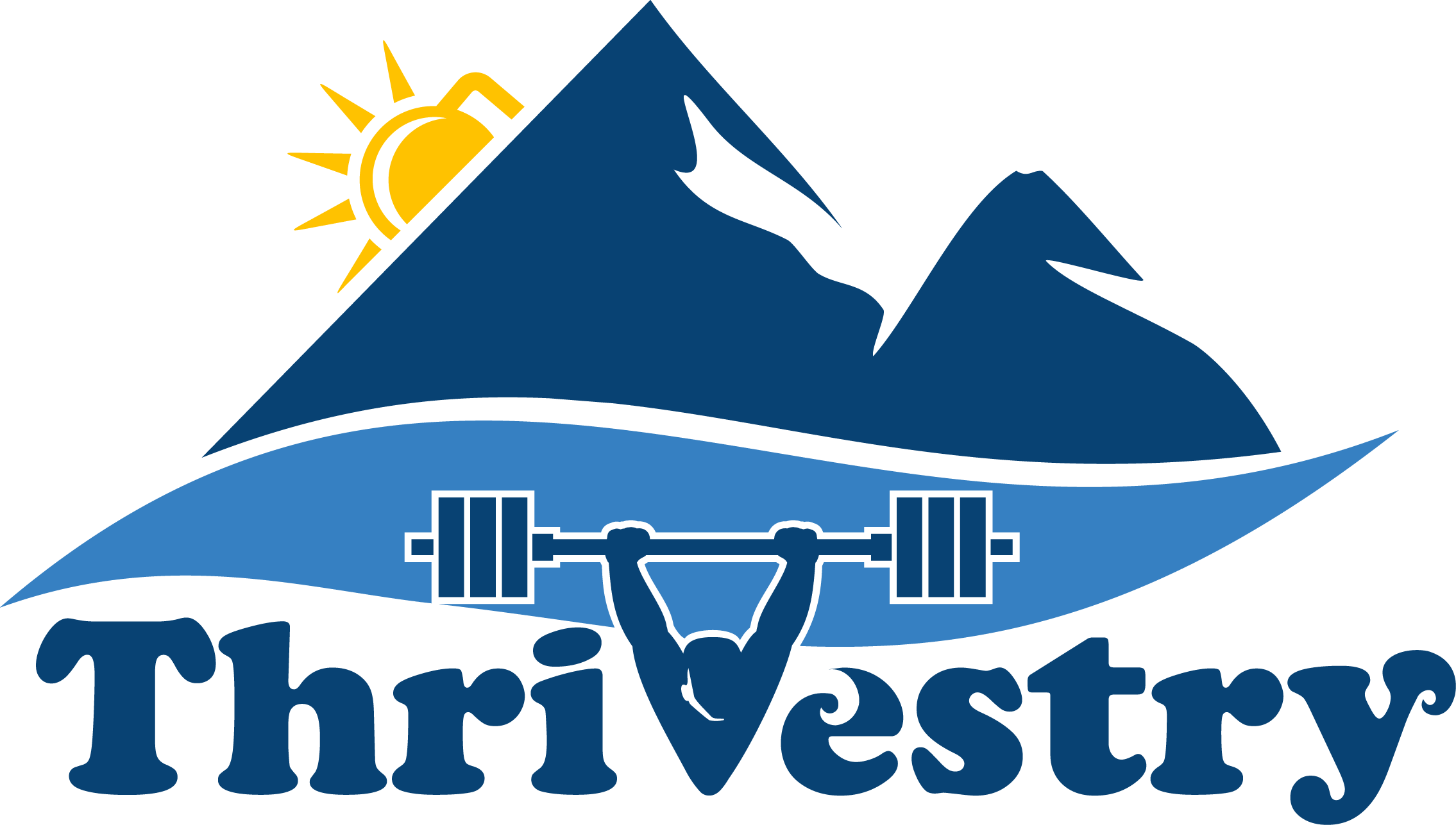
0 comments
Leave a comment